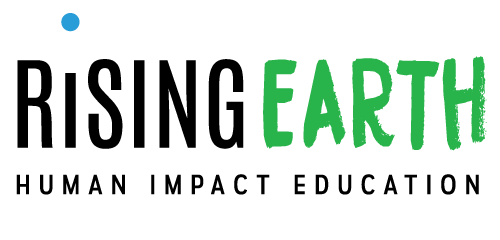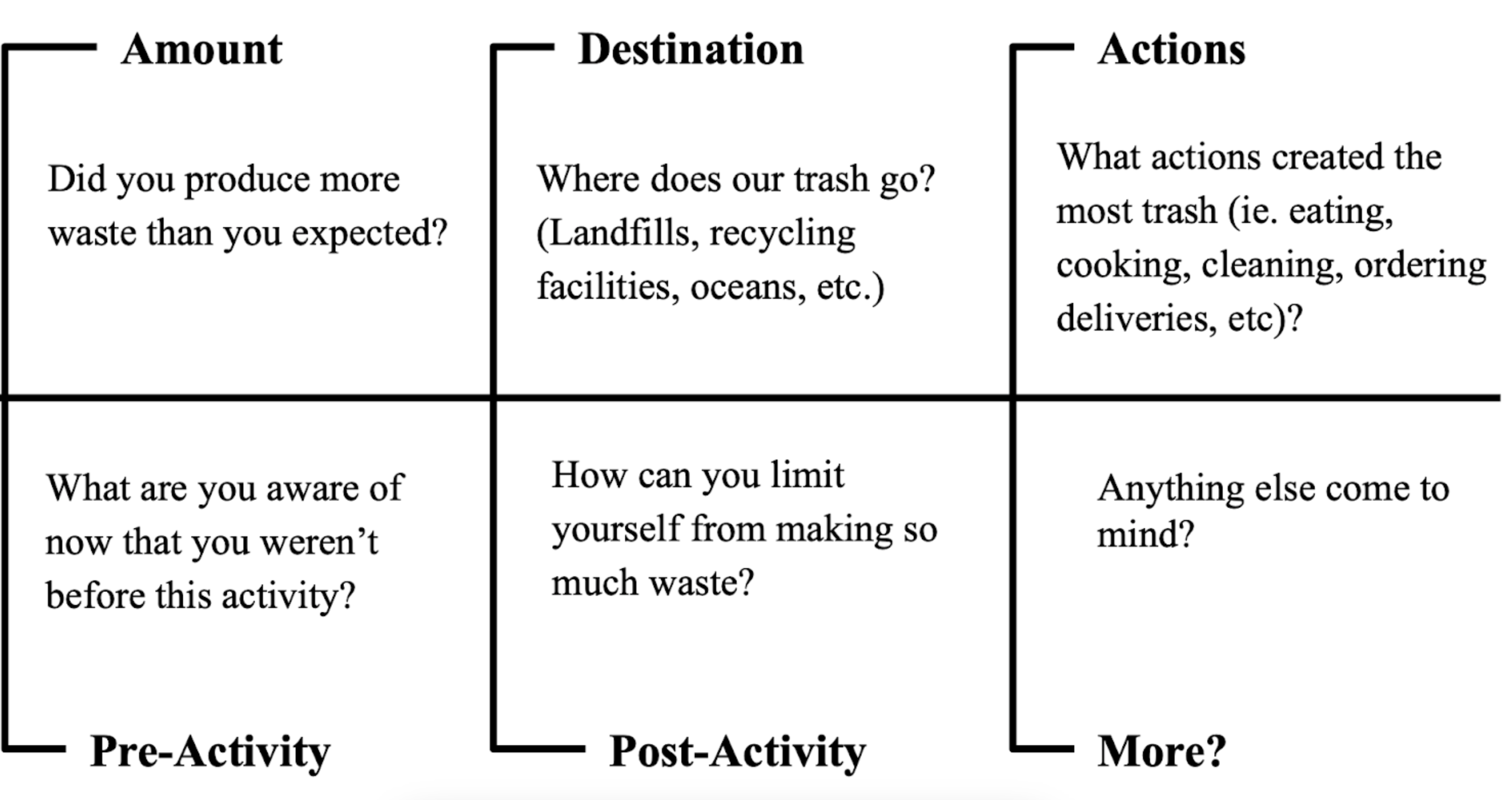Human Impact Activity:
Trash Awareness Journal
AGE: 7+, ideal for middle & high school
TIME: 30-60 minutes, 2-7 days
MATERIALS: Camera, Paper, Pen/pencil, Device for online research
Artist: Rachel Liu (alumni Teen Production Council)
Introduction
Have you ever thought about how much trash you create—and where it all goes?
If everyone on Earth lived like the average American, we’d need five planets just to support all the stuff we use and throw away. That’s not sustainable. Sure, big change needs to happen from governments and corporations, but what we do in our everyday lives still matters.
Recycling is part of the picture, but it’s not the whole solution. Only about 5% of plastic in the U.S. actually gets recycled properly each year. That’s pretty low—but not everything is a lost cause. About 68% of paper, 65% of aluminum, and 35% of glass gets recycled, which shows that when the system works, it can make a difference.
So don’t ditch recycling altogether—just don’t stop there. The real impact comes from reducing what we use in the first place, reusing stuff whenever possible, and finding creative ways to repurpose things instead of tossing them. Recycling should be the last step, not the first.
You don’t have to be perfect. But being more aware of what we use and where it goes? That’s where real change starts.
So how do we go from that
to this?
It starts with us!
For the next two days, you’ll track what you throw away and answer some reflection questions.
Step 1: Document your trash
Step 2: Track your trash
At the end of the two days, look back through your photos or sketches.
Copy the chart onto a piece of paper, and include however many rows you need based on the number of items you threw away. (ex: 30 photos of waste = 31 rows in chart)
If you are unsure, use sites like LA’s guide and NYC’s guide to recyclable items. Use this website to see which items are compostable. (You may need to research the recycling and composting guidelines for your own community/city.)
Stuck on the notes? Here are some examples:
This banana peel is compostable, but I sent it to the landfill.
Didn’t dump out food remains from container, so it’ll probably not be recycled after all since it’s “contaminated.”
I thought I could recycle this paper cup but it’s coated in a plastic that can’t be recycled.
Step 3: Reflect
In one or two paragraphs, reflect on the past two days and what you discovered about your waste. Consider these questions:
Before you move on!
A note: Becoming more aware of our waste/consumptive behaviors within our society can be shocking and can seem like there is no end in sight. Please do what you can to move forward after participating in this activity, including taking a pause for self-care and dealing with any strong emotions that come up, if needed.
Step 4: Change for the better
Think of one change you believe you can make in your consumption and waste habits. Talk to your family (or someone you live with or friend) to commit with you for one week. Check in with each other at the end of the week. Then try to do 2 weeks. See if you can get to 21 days-3 weeks. Research has shown that doing something for 21 days makes a new habit!
Feeling stuck?
Here are some examples!
Tell restaurants that you're ordering takeout from that you don't need napkins or plastic cutlery. Use or bring what you have at home.
When grocery shopping, bring your own jars for bulk items like nuts and beans and your own bags.
Use a reusable water bottle.
Use rags instead of paper towels when cleaning.
Start composting.
Only buy a shirt, bag, or any new belonging, if you donate or give away one you already have.
Bring your own containers to restaurants for leftovers.
Curious? Extend the learning with some cool videos!
Links for the extended learning videos:
Composting
Landfills
Repurposing
Salvaging food waste
Extended Activity: Make your own Gregg Segal-inspired portrait series
Gregg Segal’s 7daysofgarbage_18
Gregg Segal’s 7daysofgarbage_09
Some background: Hosted in his own backyard, Gregg Segal’s project is a portrait series of people from all kinds of backgrounds, focused around three themes: the water, the beach and the forest. Yet perhaps the star of the show is their week’s worth of trash that is with them in every single picture.
Get inspired to make your own! Segal points out this series is not to blame anyone but rather to raise awareness towards ignorance towards consumption. So go ahead and showcase your design and photography skills! Take all of your trash that you have gathered throughout the week and come up with your own portrait series. You can follow Segal’s water, beach and forest trio or come up with something else that fits you and the surroundings you live in.
Check out this link to see Segal’s series for some inspiration if you’d like!
Once finished, you can present your finished series to your family or friends, yet do not feel pressured to do so. The aim of this series, alongside the trash awareness journal is self-reflection, so do what you feel comfortable with.
One more thing before you go!
We truly hope you learned something about yourself and the environment while doing this activity.
If you have already done this exercise in some way before, try doing it again every year. Think of it as a layering exercise where you can grow upon your past experiences, creating even stronger awareness and healthier habits!
We hope you had a bit of fun and be sure to check out the other activities as well!
Share your work or your experience of this activity here!














